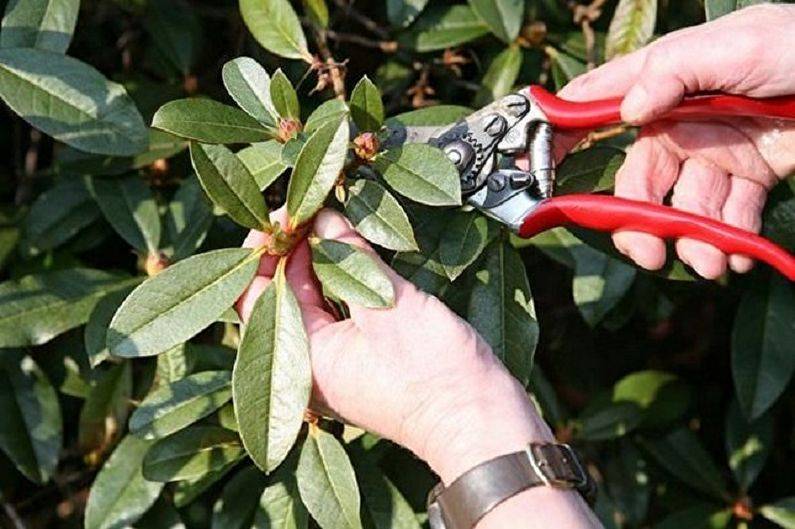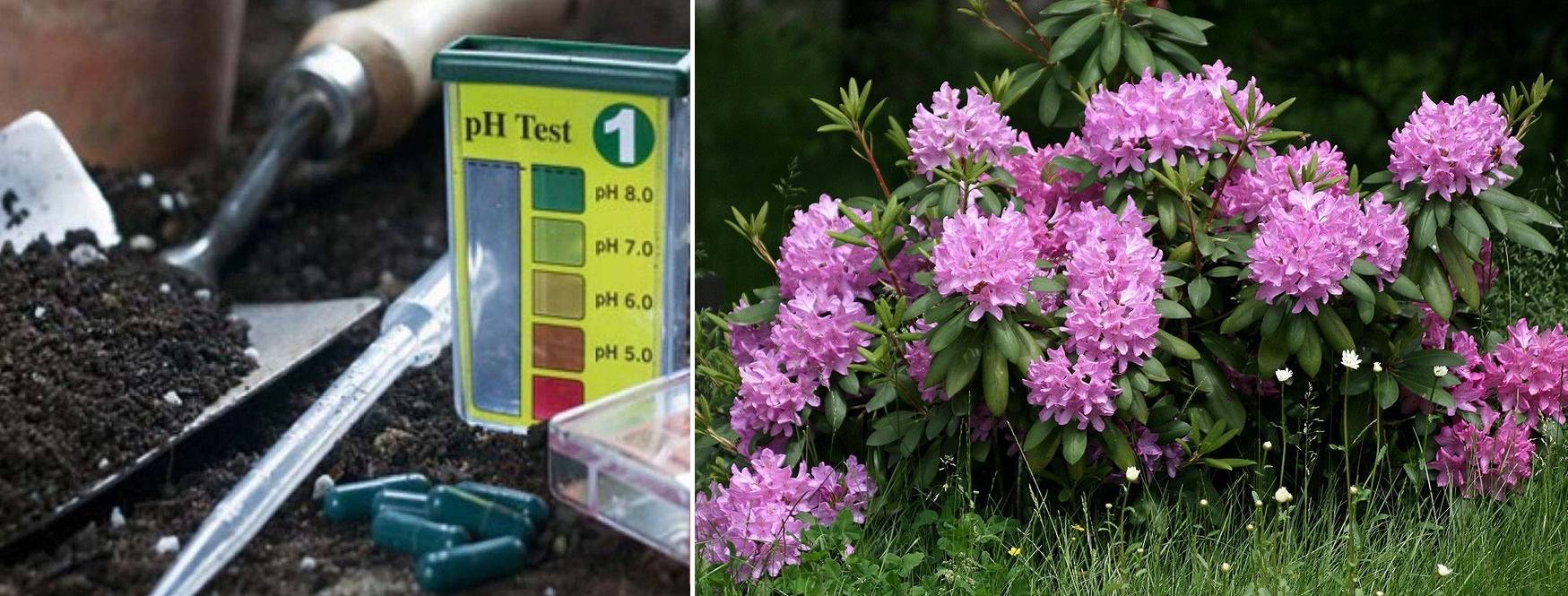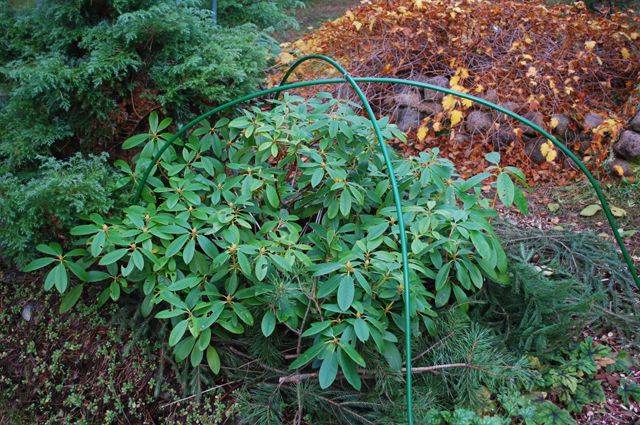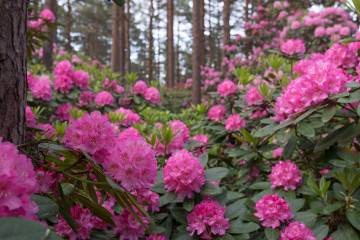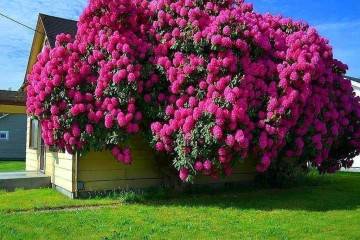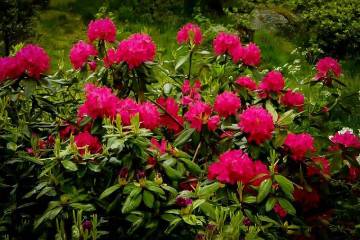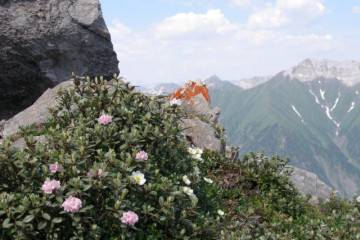Rhododendron katevbinsky grandiflorum
Content:
Rhododendron Catawbiense (Rhododendron Catawbiense) is an evergreen flowering shrub, popular in domestic garden floriculture due to its winter hardiness and adaptive qualities. Many frost-resistant hybrid varieties have been created based on this variety of "rosewood", including Purpureum grandiflorum.
Description of rhododendron grandiflorum
The natural habitat of the rhododendron catavbiens grandiflorum is the mountain slopes of the eastern part of North America. At home, this plant covers huge areas in open spaces or under the shade of tall trees with lush blooming clouds. The flower was brought to Europe at the beginning of the 19th century. and immediately gained popularity due to its decorative qualities, resistance to low temperatures (down to -32 ° C) and changes in weather conditions.
The bushes of Katevba rhododendron are large in size, reaching a height of 2-4 m, and sometimes up to 6 m. The average annual growth of a plant is 10 cm. Young shoots are covered with a felt edge, over time they become lignified and become naked, acquiring a brown color. The crown is semicircular, dense in diameter, can reach 2 m. The elliptical leaves are elongated up to 15 cm in length and 5 cm in width. The foliage is glossy, dark green in color with a light underside with clearly traced veins.
Flowering lasts about a month - from May to June. The flowers are shaped like bells with a diameter of 5-6 cm, connected in large-flowered inflorescences up to 20 pcs. The color can be different: white, lilac-purple, pale purple, both monochromatic and with shade transitions.
Breeding features
Reproduction of Katevbinsky rhododendron can be carried out vegetatively (by layering, cuttings) or through planting seeds.
Cuttings are carried out from the second half of June. For this, young healthy shoots 8-10 cm long are harvested, removing the lower leaves from them and leaving a couple of the upper ones. In order for rooting to be successful, the cuttings are kept for several hours in a growth stimulator. Then they are buried in a suitable soil and create greenhouse conditions, covered with a film or glass jar. The evergreen rhododendron grandiflorum will take root in 3-4.5 months.
When propagating by layering, a small piece of bark is removed from the selected branch, pressing the shoot to the ground with a bare place using a special bracket. Subject to the conditions of care, a year later, a rather large young plant will sprout on the spot, which can be separated from the mother bush and planted on another site.
To grow rhododendron from seed, the seed is planted superficially in January. Germination will only occur if the temperature is kept constant at 20 ° C. The sprout can be transferred to open ground not earlier than the second year of life.
Landing features
Saplings of the Katevbinsky rhododendron grandiflora are best purchased in the garden center. The choice of planting material should be approached responsibly, paying attention to resistance to cold weather.
It is recommended to give preference to container seedlings with a formed root system that have reached the age of 2-3 years. In this case, it is necessary to carefully examine it, paying attention to any signs of the presence of an ailment.
Boarding time
Planting is best done in spring, during all summer months, or early fall. In many ways, the choice of a suitable date depends on the climate and weather conditions at the moment. Tentatively, you can plan a spring landing:
- in mid-April in the south of the country (Kuban, North Caucasus);
- at the beginning of May in the Middle zone (including in the Moscow region);
- in mid-May in Siberia, in the Urals, in the Leningrad region.
Place and soil for planting
Preference is given to areas with an abundance of diffused sunlight. A slightly shaded place under the spreading crown of a tall tree at a distance of about 2 m from it is perfect. It is desirable that it be reliably protected from wind gusts.
The soil composition should be selected in accordance with the preferences of the rhododendron. Katevba rhododendron needs a rather acidic, peaty soil enriched with humus. For loosening, you can add coarse sand. When planting, a complex fertilizer is mixed with the soil, which does not contain calcium and chlorine.
It is recommended to prepare the planting pit 2 weeks before the main work. Its optimal size is about 60 cm in diameter and 40 cm in depth.
Seedling preparation
Planting in the ground cannot be carried out without removing the non-viable parts of the root system that prevent the growth of young roots, since the development of the plant may slow down and it will die. To avoid this, carefully remove all the dead parts of the rhizome with a sharpened tool and place the seedling in heated rainwater. You can start planting when the root ball has absorbed enough moisture and air bubbles stop rising to the surface.
It should be borne in mind that the shrub does not perceive well the deepening of the root collar, so it must be installed at the level of the surface or even raised by a couple of centimeters. After completing the planting, the soil is mulched with pine bark without affecting the root collar. For some time after planting, the rhododendron needs to be shaded and often sprayed with water.
Fertilization
For the first few years, the young plant is not fed. If it gives less than expected growth, then the reason is most likely a violation of planting rules or an inappropriate level of soil acidity.
An adult Katevba rhododendron is fed several times during the season:
- before the beginning of the flowering period, it is recommended to apply fertilizers with a high nitrogen content (azofosku or specialized formulations for rhododendrons);
- when the flowering phase has come, it is necessary to spray with flower growth stimulants;
- from July and towards the end of summer, fertilizing that does not contain nitrogen is used to help the shrub to compact the shoots and leaves for their better preservation in the winter.
The fertilizers used can be in liquid or dry form. The former are used for spraying or watering in the middle of the bush, and the latter are scattered across the diameter at a distance of 20-30 cm, having previously lifted the mulch, and then returning it to its original place.
Rhododendron care requirements
The soil should always be moderately moist, as its drying out or moisture stagnation is detrimental to the plant. In places where water accumulates after precipitation, it should be removed. The soil under the bush is never loosened or dug up. The acidity is maintained with coniferous mulch, citric acid or special acidifying compounds for rhododendrons. The shrub responds gratefully to sprinkling with natural water, rain or taken from reservoirs.
Cropping flowers
Since rhododendron is grown mainly for the sake of lush large-flowered inflorescences, immediately after flowering, each of them must be carefully removed. The withered inflorescence is cut off, paying attention to the new shoots located near the base and trying not to hurt them.
Thanks to the timely pruning of flowers, the supply of nutrients in the shrub will not be used for the formation of seeds, but for the establishment of new flower buds. In addition, thanks to this procedure, the decorativeness of the rhododendron increases - 2-3 young shoots are formed in the place of the removed inflorescence.
Preparing rhododendrons for winter
Before the first autumn frosts come, rhododendron bushes are sprayed with preparations containing copper as a preventive measure. Each plant is covered with peat to a height of 20 cm.
The evergreen Katevba rhododendron, called grandiflorum, may well overwinter without shelter, but then it risks getting sunburn and drying out, and the stems will be damaged by snow. To preserve the plant, a frame is installed around it and covered with a non-woven covering material.
Pests and diseases
According to the description, the Catawbiense Grandiflorum rhododendron has no specific diseases and pests. The plant is susceptible to common garden ailments and parasites. As a preventive measure, fungicides are treated twice with an interval of 2 weeks in spring. Prevention and treatment of chlorosis is carried out with iron-containing drugs.
Rhododendron Grandiflora is the best suited for growing in Russian gardens. With the right choice of the site and compliance with the planting requirements, caring for the crop will not cause problems. In most cases, the Katevba rhododendron does not even need a winter shelter, so it is adapted to the harsh climate.

